|
Summer time is supposed to be fun, but we don't want kids to stop learning for a couple of months so here are some ideas to keep the learning happening while enjoying the summer break. Many of these ideas can be used throughout the year as well. Math happens all around us, but we often overlook it. There are so many different real world activities that can be done that involve math. Here are a few ideas to try. Measurement activitiesCooking and baking are great ways to practice using measurement and then enjoying the food afterwards. When measuring ingredients, kids get practice with fractions, addition, multiplication, and division. They also get to learn about temperatures. For more measurement practice, use rulers, tape measures, or measuring cups to measure objects around the house. Compare lengths, weights, and volumes to practice measurement skills. Outdoors activitiesKids love to be outdoors during the summer, so take advantage of that time to incorporate some math activities. Sports is a great way to do math. Kids can keep score, calculate averages, and measure times and distances. For example, how far they can throw a ball or how long they can run. Get out into nature with math. Kids can collect natural items like leaves, rocks, or flowers and use them for counting, sorting, and pattern-making activities. They can explore concepts like symmetry and classification. They could also do a math scavenger hunt where they look for different shapes, patterns, and objects. Working With MoneyThere are a few different ways that money lessons and practice can be done. Here are some ideas to consider. 1. Create a store and practice counting money, making change, and budgeting. 2. Go shopping. Give the kids a budget and let them help with making a shopping list, comparing prices, and calculating totals. 3. Do a yard sale and let the kids have an area or table where they can sell some of their things. Let them take responsibility for handling the money for their sales. They could also have a lemonade stand or sell cookies as part of this activity. Physical activitiesAdding movement or physical activity to math can help reinforce concepts in a fun way. Here are some ideas to consider. 1. Use jumping rope, clapping games, or songs to practice skip counting and multiplication tables. 2. Solve math problems while playing hopscotch. 3. Do some timed running activities and practice graphing the results afterwards. Critical thinking/Spatial reasoning activitiesBeing able to think critically and reason spatially are skills that require practice. Jigsaw puzzles and games of logic work well here. Many board game activities can also work. Building things also helps. Here are a few ideas to try. 1. Use building toys like LEGO or blocks to explore geometry and spatial reasoning. Challenge children to build specific shapes or structures and discuss their properties. 2. Solve number puzzles and riddles together. You can find these in puzzle books or online, and they help with logical thinking and problem-solving skills. 3. Work on jigsaw puzzles, Sudoku, or other logic puzzles that require spatial reasoning and critical thinking. This is only a small sampling of things that can be done to incorporate math activities into real world situations while having fun. They will enjoy doing these kinds of activities and reinforce or maintain their skills without them even realizing it. After all, summer is supposed to be a break from school so doing lots of worksheets and math lessons is not really the way to get the kids engaged when they just want to get outdoors and enjoy their break. Related PostsTrack and field season is here and kids are training and competing for their schools. Younger children may not be competing yet, but they still may be attending track meets or doing some activities that are similar. This is a great time to take measurement outdoors. Measurement Activities For Track And FieldMost of the events in track and field have to do with distance, length or height specifically. This is a good time to talk about bigger distances than that of a ruler or small tape measure. Of course, those lengths are also important to learn and practice. On the track, there are shorter races and longer races. There are 100 m, 200 m, 400 m, 800 m etc. races. Some of those distances are pretty long for younger children so they may only try the shorter ones. For older students, they are able to go even beyond those distances. For younger children, shorter distances can be used. These could be measured out with a trundle wheel in the school yard. Different races can then be held. it might be fun to add in some fun races like 3 legged races and potato sack races. For long jump and high jump, the distances jumped are measured. These distances are shorter, so they are measured with measuring tapes or on the high jump standards. If shot put is included, this would be measured by how far the shot put is thrown, so a measuring tape would be used for this as well. Field events are measured in meters and centimeters. Time Measurement OutdoorsWhen doing track events or other races, not only is it fun to see who wins the race, but how fast they are. This is an opportunity to practice measuring time using stopwatches. Doing multiple races encourages kids to better their times and focus on their personal bests instead of just being first across the line. Team events can also be fun to do. Check out these outdoor measurement team activities that use standard measure. They can be fun to do and require just a few pieces of equipment. Outdoor Measurement Activities For Area And PerimeterPerimeter and area can be done with standard and non-standard measurement units. After doing some practice in the classroom with grids and units, it could be fun to get outdoors and try to use measuring tapes or trundle wheels to measure bigger areas or perimeters. If there's a fence surrounding the school yard, this could be measured in sections to figure out the perimeter. The area of the playground or the school field could be measured as well. Measuring the perimeter of the school could also be done. It may require doing it in chunks and recording it on graph paper to figure out the actual perimeter as many schools are not rectangular. Some Other Measurement IdeasMeasuring Tape Exploration: Provide the kids with measuring tapes and let them explore different objects in the outdoor environment. Encourage them to measure the length of benches, fences, tree branches, or any other objects they find interesting. Footstep Measurement: Have the kids measure distances using their footsteps as a unit of measurement. For example, challenge them to measure the length of a path by counting how many footsteps it takes to walk from one end to the other. These are only a few different ideas for using measurement outdoors. Depending on your surroundings, there are many opportunities to use both standard and non-standard measurement outside to connect skills and concepts with the real world. Have some fun with your students while exploring some of these ideas. Related PostsMoney is a necessary commodity in our lives, but it's a difficult concept for many children to understand. Because we are living in a plastic world, children don't always get to see and handle real money anymore. This makes it even more difficult for them to understand how to handle it and use it correctly. It is up to us as teachers to help them understand the importance of money and how to count it, earn it, pay for things with it, and make change when needed. This can be a daunting task unless we use concrete examples and situations. Recognizing Coins And Their ValuesRecognizing coins and understanding their values is one of the first things that needs to be taught. There are many different resources available for doing this, but it's important to make sure that kids get to actually see and handle the coins or play money that looks like the coins as they practice identifying them and stating their values. In Canada, we use the terms penny, nickel, dime, and quarter for the smaller values. It's amazing how many kids don't know which are which. I get questions like, "Is that the beaver, or the sailboat?" They examine the coins looking for clues as to how much each is worth. I suspect it is the same with kids in The United States. They may have different symbols on the coins, but the confusion still happens. Resources for identifying and counting moneyHere are some resources I created to help kids identify different coins and bills, recognize their values, and count money. There are Canadian and American versions as well as Boom cards versions for those wanting digital resources. It's important to make sure that these resources are used with many different hands on opportunities to manipulate the money and look at it closely so that the connection can be made to the abstract examples of images and questions. Resources for applying the skillsApplying the skills of counting, earning, and spending money is a necessary part of learning to handle money. I have created some resources to practice doing this. Note: Café Élisa is in French. Learning about debit cards and moneyBecause we live in a world of plastic currency, it's important to make sure children understand that money is still exchanging hands and there must be money available in order to use the debit card. I created this unit to help kids better understand this and to provide opportunities for them to earn money and keep track of what was going in and out of their bank accounts. Other money mattersCredit cards are another type of spending that adults use, but I didn't address this specifically with my students. It's a much bigger deal to explain debt and should be dealt with, but I feel it's best done in detail as kids get older. Taxes are another part of money skills that needs to be addressed. This will require separate instruction to better understand how to calculate it and allow for an extra cost when calculating what money is needed to purchase things. There's nothing worse than getting to the checkout and discovering you are short of money because of the added taxes. Kids need to be exposed to this in teaching about money so that they aren't disappointed when they go to buy something and don't have enough money. I have not specifically addressed this in any of my resources, but it's a necessary element to at least mention to younger children when teaching about spending money. Even in a mostly electronic economy, it's important to be able to handle actual money for situations where cash is needed. Hopefully some of these resources will help with preparing your students for the monetary world out there. Check out some of my money bundles for more resources and extra savings. Related PostsDo your students know much about money and how to count it, earn it, or use it for spending? Can they make change? Do they realize that they have to have money in the bank in order to use a bank card? All of these actions are necessary if they are to be able to handle money responsibly in life. I recently worked with some students in grades 4 and 5 who had great difficulty with identifying coins, counting money, and making change. It was important to start at the beginning and work through different skills one at a time to help them understand how money worked. A few years ago, there was a Young Entrepreneurs event at our school. The grade 6 classes created items for sale and they learned all about creating a budget, purchasing materials, determining prices to earn a profit, and how to work with money. When I saw this in action, I decided to try a modified event with my grade 3 class. We created items for sale and we did a Spring Fundraiser for a special field trip. This took a lot of preparation, but it was a huge success. Check out more here. In order to make sure my students understood how money worked and how to handle it, we worked together and created this unit. I created the main outline and framework, and then added touches and refined it as we worked through the different lessons. I was amazed at how much they learned and how well they were able to work with money as a result. Part of the process included understanding how to handle money in a variety of situations. I created a bunch of scenarios for counting money, making change, earning money, spending money, and saving money. This led to the creation of Kid Themed Money Word Problems. I have used these task cards a few times since and every time they have helped kids to make connections that help them understand how money works. If you are looking for ways to help your students better understand how money works and how to use it effectively, check out these two resources. They work! Next time I will share some other ideas and resources for working with money. Related PostsWelcome to the magical world of winter, where snow-covered landscapes become the perfect canvas for learning geometry in a fun and interactive way! Embrace the winter wonderland with these six delightful winter activities that blend the magic of snow with fundamental geometry concepts. Engage your young learners in hands-on, snowy adventures that make geometry come alive in the chilly outdoors. Snowy Geometric SculpturesTurn the snowy outdoors into a geometric playground with snowy geometric sculptures! Provide children with guides for shapes like cubes, spheres, cylinders, rectangular prisms, and cones. Watch as their creativity takes flight, molding these shapes into artistic snow sculptures. As they build, engage in conversations about the properties and names of the shapes, making geometry come alive in a winter wonderland. Snowy 3D Shapes Hide And SeekTurn the snowy outdoors into a treasure hunt for 3D shapes. Hide various objects like cones, cylinders, cubes, rectangular prisms, and spheres in the snow. Children can search for these shapes and then discuss their attributes. They can also match them to corresponding shapes on a worksheet. This activity combines the excitement of a scavenger hunt with shape recognition and introduces the concept of 3-dimensional shapes in a playful way. Snowy Geometric PatternsMake some stencils of different pattern block shapes. Provide children with colored water in spray bottles and patterns. Have them make various patterns in the snow by spraying the colored water onto the snow through the stencils.This hands-on activity combines patterning with geometry exploration. Symmetry SnowmenInstead of just making snowmen, ask the children to create symmetrical snowmen, ensuring that each side mirrors the other. Discuss symmetry and encourage creativity as they adorn their snowmen with natural materials. This activity introduces symmetry in a fun and imaginative way. Snowman MeasurementBuild snowmen with different-sized body parts, such as small, medium, and large snowballs for the head, body, and base. Discuss size comparisons and measurement as children arrange the snowballs. You can also incorporate simple measuring tools like rulers or non-standard items (e.g., twigs) to measure the height of their snow creations. Winter Puzzles Using Pattern BlocksSometimes the weather doesn't cooperate and it's necessary to take winter activities indoor. Here's a great activity to try. Create some winter puzzles that can be constructed using pattern blocks. Trace a pattern block design on a transparent page or sheet protector and place it over a completed winter puzzle. Take a picture and print it on cardstock. Then cut it out and put it into a baggie to save it. Print another picture and place it in the baggie. Use the shapes and the picture to rebuild the puzzle. By integrating geometry and measurement into winter activities, children can develop a deeper understanding of these mathematical concepts in a fun and engaging way. These activities promote hands-on learning, problem-solving, and critical thinking skills for young learners. *Let the snowy outdoors be your classroom as you embark on these geometry adventures. Bundle up, head outside, and let the snowy math extravaganza begin! Related PostsWinter provides a magical and snowy backdrop for engaging and educational activities in the classroom. As primary teachers, incorporating measurement into winter-themed lessons can make learning more fun and engaging for young students. Check out 7 creative measurement activities that will not only capture the imagination of your students but also blend math and science ideas. Snowman Size ChallengeKids love building snowmen, so why not bring the fun into the classroom. Have your students build the snowmen just outside the classroom so they can see them throughout the day. If you add in some math and science, it will make the activity even more fun. Task: Get your students to measure the circumference of the different parts of their snowmen and then compare the results with their classmates. Math focus: measuring the size of different parts of a snowman helps with understanding shapes and sizes. Science focus: Observing the structure of the snowman introduces basic geometric principles. Fun thought: The snowman's middle could be as wide as a bear hug! Snow Depth InvestigationsWhen the snow falls, it doesn't fall evenly. it can be varying depths due to wind, landscape and nearby structures or trees. Task: Take advantage of this winter landscape by measuring the depth of snow in various locations. Students can use rulers to measure snow depth on the driveway, grass, under trees, and in snowdrifts. This activity not only teaches measurement skills but also encourages observation and data collection. Math focus: Using rulers to check how deep the snow is in different places, helps teach about numbers and spatial concepts. Science focus: Comparing snow depth in different locations encourages the understanding of weather patterns and how snow accumulates. Fun fact: The snow on the grass is like a fluffy pillow, while the snowdrifts resemble magical mountains. Winter Temperature StudyBraving the cold to measure temperatures on snow days is exciting for kids. As the wind howls and the snowflakes dance, students can collect temperatures and then use the data to make comparisons. Task: Explore the winter weather and record temperatures on snow days and compare them with non-snow days. Include the windchill factor. Math focus: Recording and comparing temperatures involves analyzing and interpreting data. Science focus: Understand the impact of windchill and how it makes the temperature feel colder. Winter Themed BakingCombine the joy of winter with the excitement of baking by creating winter-themed treats. Task: Practice following recipes and using precise measurements to make some delicious snacks. Math focus: Precise measurements in baking emphasize the importance of accurate calculations. Science focus: The baking process shows the transformation of ingredients, introducing basic chemistry concepts. Weight Of Different Snow TypesKids are excited to learn that different types of snow have different weights and why this is so. Task: Compare the weight of flaky, packed, and wet snow. Math focus: Weighing different types of snow involves understanding units of measurement and comparing weights. Science focus: Exploring the weight of snow types connects to the physical properties of water in different states. Fun fact: Packed snow feels like a heavy snowball, while flaky snow is as light as a snowflake gently falling from the sky and weighs very little. Snow Angel Wing Span MeasurementTake your students outdoors for some winter fun by making snow angels. After creating their snowy masterpieces, have them measure the wing spans of their snow angels. This activity combines creativity with measurement, making it a memorable and enjoyable experience for students. Task: Make snow angels and measure the wing spans. Math focus: Measuring wing spans involves comparing lengths and learning about spatial relationships Science focus: Creating snow angels introduces the physics of body imprints and the impact of pressure on snow. Melting Snow Volume ExperimentThe grand finale of our winter measurement activities is a melting snow experiment. Task: Explore the concept of volume by measuring the amount of snow in a bucket before and after it melts. Math focus: Measuring volume requires understanding of units and how they relate to three-dimensional space. Science focus: This experiment allows students to witness the transformation of a solid (snow) into a liquid (water) while practicing measurement and observation skills. Winter provides a unique opportunity to make measurement activities in the classroom exciting and relevant for primary students. By delving into these winter measurement activities, students not only strengthen their math skills but also develop a deeper appreciation for the science that surrounds them in the winter wonderland. The joy of discovery is not just in the snowflakes but in the math and science concepts that come to life during these hands-on adventures. Winter measurement activities aren't just about numbers and rulers; they're about creating lasting memories and instilling a love for learning. As primary teachers, let's embrace the enchantment of the season and turn our classrooms into snowy laboratories where every measurement tells a tale of winter wonder. The joy in their eyes and the laughter in the air will be the true measures of success in your winter measurement adventures. Related PostsThe holidays are over and it is time to jump back into academics. This sometimes takes some time as the structure and routines are reestablished. Getting settled after the Christmas break may require not only activities to make kids comfortable and help them get regrounded and back into routines, but also some activities that inspire and excite them as they get back to academics. January and February are full of different celebrations that can be the focus of activities as academics are reintroduced. Here are a few ideas and resources that might be fun to try. Goal settingFor January, goal setting is a great idea. It can be a way to make a fresh start and provide a focus for upcoming months. These goals can also be used as a focal point for upcoming student led conferences in the spring. Here are some templates that might be helpful. It is important to make sure that children understand that they have accomplished many things as well. They need to focus on what they can do well and then choose things that they wish to improve. These stars and wishes could be personal, academic, or general. It is up to the kids to identify what their strengths are, but they may need some guidance at the beginning. Perhaps they could ask others what they think. We can be our worst critics and we may not see what others see, so having others share what they notice could be helpful and empowering. Here is a template to fill out and keep as a reminder. Grab a free copy now. Ringing in the New YearMany families celebrated on New Year's Eve. Some of your students may have been able to join in as well. They may have had fun activities to do and noise makers or fireworks may have been part of the celebration as well. Others may not have had this experience. Why not have a class celebration to start off the New Year. Try creating photo booth images and a bulletin board display. Many stores are clearing out New Years items so you may be able to get some hats, blowers, and maybe even glasses to add to the fun. Here are some templates that could work as frames for the photo booth pictures. They include frames without the year so they can be used for future years if you are not ready to use them this year. Groundhog DayFebruary 2nd kids wait to find out if the groundhog has predicted an early spring or another 6 weeks of winter. Here are some math and language activities as well as a couple of mazes that might be fun to try. Other Winter CelebrationsChinese New Year, Hundreds Day, and Valentine's Days are 3 other winter celebrations that kids love to celebrate. Here are some activities for those special days. No matter the celebration, hands on fun activities can help to engage kids in their learning. They can be used as a jumping off point before introducing new concepts, or they can be the theme for writing or research. It's up to your creativity and needs as you plan your lessons. Here's to having fun and learning as the New Year begins. Related PostsNumbers are all around us, and they play a big part in our lives. Many people might think that math is just something they are required to learn in school, but understanding numbers, also known as "number sense," is super important in real life too! It helps with everyday problem solving and making smart choices. Understanding numbers is a confidence booster and something of a super power that helps us in the real world. Teaching kids number sense is necessary to help them function successfully in real life. Here are some examples that may help your students understand why they are learning about numbers. Imagine you're at a store, and you want to buy a toy. You need to know how much it costs and how much money you have. That's where number sense comes in. It helps you figure out if you have enough money to buy that awesome game or if you need to save a little more. Number sense makes everyday problem-solving easier! It also helps with making smart choices. Let's say you're planning a birthday party, and you need to know how many cupcakes to bake or how many friends to invite. Number sense helps you make those decisions, so your party turns out just right. When you understand numbers, you feel more confident in everything you do with math. Whether it's doing homework, playing math games, or even just counting your candy, number sense gives you the power to tackle math challenges with a big smile. Think of number sense as a real-life superpower. It helps you understand money, time, and measurements. You'll use it daily, whether you're budgeting your money, planning a trip, or even cooking your favorite meal. Think about how math sometimes feels like a tricky puzzle. Students often seemed overwhelmed and confused as they try to figure out the puzzle. Well, number sense is like having a magic key to unlock those puzzles. It helps them add, subtract, multiply, and divide numbers like a pro. When math is easy, it's more fun! Here are some ways to teach math in the classroom so students are more engaged and able to understand how it works. Teaching Number Sense in the Classroom1. Math Adventures and Hands-on Learning: Start with everyday stuff. Let students count and group toys, buttons, or snacks. Count books, pencils, or even footsteps. Ask questions like, "Can you find seven red buttons?" or "How many pencils do we have?" or "How many paper clips do you have?" This makes math real and relatable. 2. Games are a game-changer in the classroom. Try "I Spy" with numbers, "Math Bingo", "Number Twister" ,"Number Bingo," "Math Memory," or "Guess the Missing Number." These games make learning feel like play and add in math skills while having fun. 3. Story Telling Math: Create math stories or scenarios. Imagine going on a treasure hunt, where students need to count their steps to find the hidden treasure. It's math with a story twist! 4. Math Puzzles and Riddles: Challenge young minds with math puzzles and riddles. These are like brain workouts that make kids smarter while having fun. They boost problem-solving skills and number sense. 5. Real-Life Math: Show them that math is everywhere. Involve them in cooking (measuring ingredients), shopping (calculating change), or planning (measuring distances on a map). Ideas for Parents to Nurture Number Sense at Home1. Math Conversations: Engage your child in casual conversations about numbers and math concepts. Ask open-ended questions like, "How many ways can we make 10 using addition?" 2. Math Books: Read math-themed books together. Many children's books incorporate math concepts in a story format, making learning more enjoyable. Reading together not only bonds you but also makes math part of your child's bedtime routine. 3. Math Art Projects: Create art using math. For instance, make symmetrical drawings, geometric shapes, or patterns. It helps with pattern recognition and can be a fun way to express math. 4. Math Apps and Websites: Explore kid-friendly math apps and websites. There are plenty of interactive games that make learning math feel like play. 5. Family Math Challenges: Set up friendly math challenges or competitions within the family. For example: Who can count the most objects in a minute? This can motivate kids to apply their number sense skills in a fun way. 6. Math Treasure Hunt: Create your own math treasure hunt at home. Write clues that involve counting, adding, or subtracting. Your child will be the Sherlock Holmes of math! 7. Math Around the House: Integrate math into daily life. Measuring ingredients while cooking or estimating how many socks are in the laundry basket are perfect opportunities. 8. Math Exploration: Encourage exploration by providing materials like measuring tapes, rulers, and scales. Let your child measure objects around the house. As primary school teachers, we have the power to make math come alive for our students. By teaching number sense in an engaging way and offering parents practical ways to reinforce it at home, we're setting the stage for a lifetime of math success. Remember, math is not just about numbers; it's about exploration, discovery, and making sense of the world. Let's work together to make math a joyful journey for our students, both in the classroom and at home! If you are looking for resources that will help with number sense and other math concepts, check out my math activities category for a variety of different options.
Have fun with math and watch your students flourish as they gain more understanding of numbers and how they work. Numbers are all around us, and they play a big part in our lives. You might think that math is just something you learn in school, but understanding numbers, also known as "number sense," is super important in real life too! Teaching our children to understand numbers helps them develop a strong and intuitive grasp of math concepts. So, let's explore what number sense is and how we can make math exciting in the classroom. What is number sense?Number sense is like having a superpower for numbers. It's not just about memorizing math facts but truly understanding how numbers work together. It covers counting, number relationships, estimation, identifying patterns, and understanding place value. It provides the tools to be able to handle every day situations that involve math confidently and comfortably. Let's take a closer look at some of the concepts it covers and how we can help kids understand the concepts. Counting skillsChildren need to learn to count fluently, not by rote, but with an understanding of each number being a quantity. When they count objects, each number relates to an object being counted. Touching objects as they count them will help with this correlation. It is important to practice counting objects until they are able to correctly count them every time. Do hands on activities so the math is tangible. Start with real-life objects. Let students count and group toys, buttons, or snacks. Count books, pencils, or even footsteps. Ask questions like, "Can you find five red objects?" or "How many shoes do we have?" This makes numbers real and relatable. Number relationshipsIt is important for kids to see how numbers relate to one another. For example: 6 is one more than 5 or two less than 8. These relationships will help them understand the basic operations of addition and subtraction and later on multiplication and division. Math vocabulary for these relationships in also important. Terms like: more than, less than, equal to, and greater than are only a few examples that can be taught to help them understand these relationships. Play games that involve looking for clues that use some addition and subtraction to solve them. Practice making groups that show the relationships between numbers. Play "Guess the missing number" by answering yes or no questions. EstimationIt is not always possible to count everything, so it is important to make educated guesses for quantities. For example: How many candies are in the jar? Children often have little idea about how to estimate and the responses are way off. It will take practice estimating and then counting for them to understand how to get closer in their approximations. Turn estimation activities into challenges. Who can get the closest number? Can they get it without going over? Practice using small amounts at first and gradually increase the number of objects being estimated as the results get closer. Identifying patternsGet kids to recognize patterns in numbers, like even numbers (2, 4, 6) or the way odd numbers always end in 1, 3, 5, 7, or 9. Try skip counting games and look for patterns when counting. For example: when counting by 5 all numbers end in 5 or 0. Reading books about math patterns is also fun to do and helps kids understand the patterns better. For example: Even Steven and Odd Todd shows the relationship between even and odd numbers. Amanda Bean's Amazing Dream shows how multiplication is just a faster way of adding. There are many books that show math patterns and relationships. Find some that fit with the concepts that you are teaching to help enrich your students' understanding. Understanding place valueIt is important that students understand what the relationship is between multiple numbers grouped together and their placement or order. For example: 4 in 42 means forty, and 2 means two). We refer to these as digits that represent different values. Play games that encourage kids to identify the mystery digit or build a number with the place values given. Check out this blog post for more about place value and some activities and resources that might interest you. Connecting number sense to the real worldNumber sense is not just for math classes. It is a necessary skill for navigating in the real world. The more we focus on how it is used in practical settings, the more our students will see its purpose and begin to use it more confidently. Being able to understand number sense and use it effectively will help with handling money, time, and measurements. It will also be used in many different settings, whether budgeting an allowance, planning a trip, or even cooking a favorite meal. Remember, math is not just about numbers; it's about exploring, discovering, and making sense of the world around us. Next time I will share ideas and activities that can bring number sense into everyday activities, and how we can encourage activities at home to help our students develop a solid understanding of how to use their number sense skills in their world. Related PostsChanging weather, cooler temperatures, and color changes are all signs of the arrival of fall. There's something magical about the colors, sounds, and smells of fall. Students often find themselves more engaged in learning when they are surrounded by the beauty of nature. Whether it's studying the changing colors of leaves, identifying different animals, or learning about the life cycle of a pumpkin, outdoor lessons are inherently captivating. Fresh air and natural surroundings can help improve students' focus and stimulate their creativity. Studies have shown that spending time outdoors can boost cognitive function and problem-solving skills, making outdoor classrooms an ideal setting for critical thinking activities. Spending time outdoors has been linked to improved mental health and reduced stress levels. Fall's cool, crisp air and the calming influence of nature can help students feel more relaxed and connected to the world around them. The hands on experiences and fresh air also invigorate students and engage them in their learning. Fall is the perfect time to encourage physical activity among students. Hiking, nature walks, and outdoor games not only promote exercise but also foster teamwork and social interaction. Getting students moving in a natural setting can help overcome the hours of sitting in classrooms and keep them engaged. There are many different subjects that can be taught outdoors. Each of these add a real world element to the students' learning and experience. Integrating social studies and science activities into your fall outdoor learning adventures can provide a well-rounded educational experience. To further enrich your fall outdoor learning adventures, try incorporating some math and language activities into the mix. Here are some suggestions for social studies, science, math, and language arts that might be of interest. Social Studies• visiting local historical landmarks * learning about fall harvest and traditions • using maps and doing a geography scavenger hunt Science• leaf identification activities • studying the pumpkin life cycle • weather monitoring • learning about weathering and erosion * keeping a nature journal • stream study • learning about seed dispersements Math• nature math scavenger hunt • using measurement skills outdoors • fall data collection Language Arts• outdoor poetry writing • nature journaling with descriptive writing • vocabulary scavenger hunt (looking for examples in nature) • reading fall themed books Preparation tipsHere are some preparation tips that will help make your outdoor sessions successful. Select an outdoor location that suits your curriculum and learning objectives. Local parks, forested areas, the seashore, or even your school's own outdoor spaces can be transformed into effective learning environments. Make sure students are dressed appropriately for the fall weather. Layers, hats, and gloves are essential to keep everyone comfortable during outdoor lessons. Tailor your lessons to incorporate the unique features of fall. Explore topics like the changing colors of leaves, the science behind falling leaves, the life cycle of pumpkins, or even Halloween-themed literature. Bring technology outdoors by using tablets or smartphones for nature observation apps or taking pictures to document findings. This can enhance the learning experience and provide opportunities for digital storytelling. Make sure that your plans are flexible and adaptable as the weather can be unpredictable and you may need to make changes quickly. With preparation ahead of time and some back up ideas in case of change, getting outside to learn is worth the effort and will benefit your students. Embracing the great outdoors during the fall season is a fantastic way to enhance your students' learning experience. The benefits of outdoor education are numerous, from improved engagement and focus to enhanced physical and mental well-being. By incorporating nature into your curriculum, you can create unforgettable learning moments and inspire a lifelong love for the natural world in your students. So, this fall, take your class outside and let the wonders of the season become your classroom. Happy outdoor learning! Related Posts |
About Me Charlene Sequeira
I am a wife, mother of 4, grandmother of 9, and a retired primary and music teacher. I love working with kids and continue to volunteer at school and teach ukulele. Categories
All
|













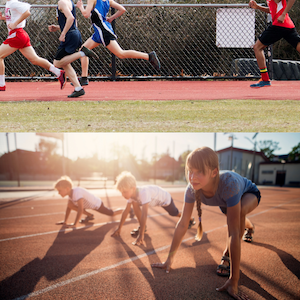



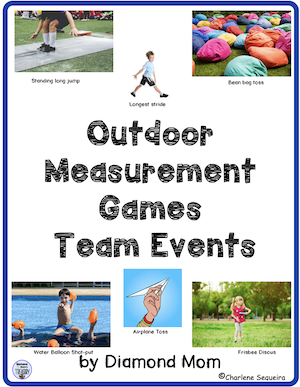







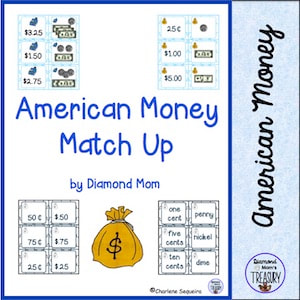
















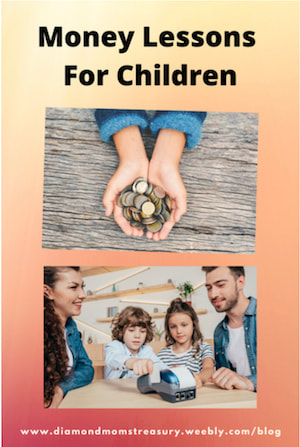











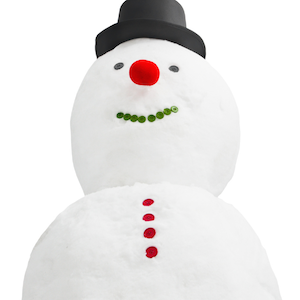






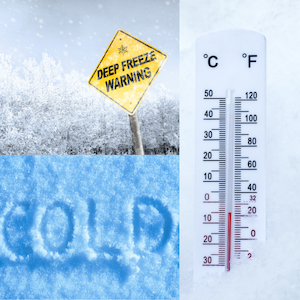








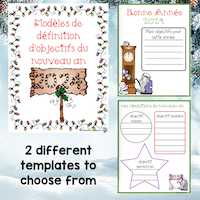


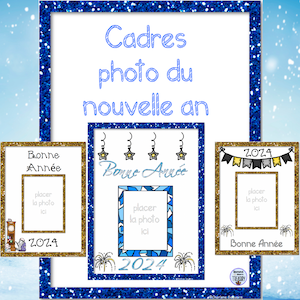
















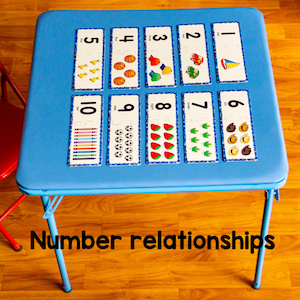


















 RSS Feed
RSS Feed